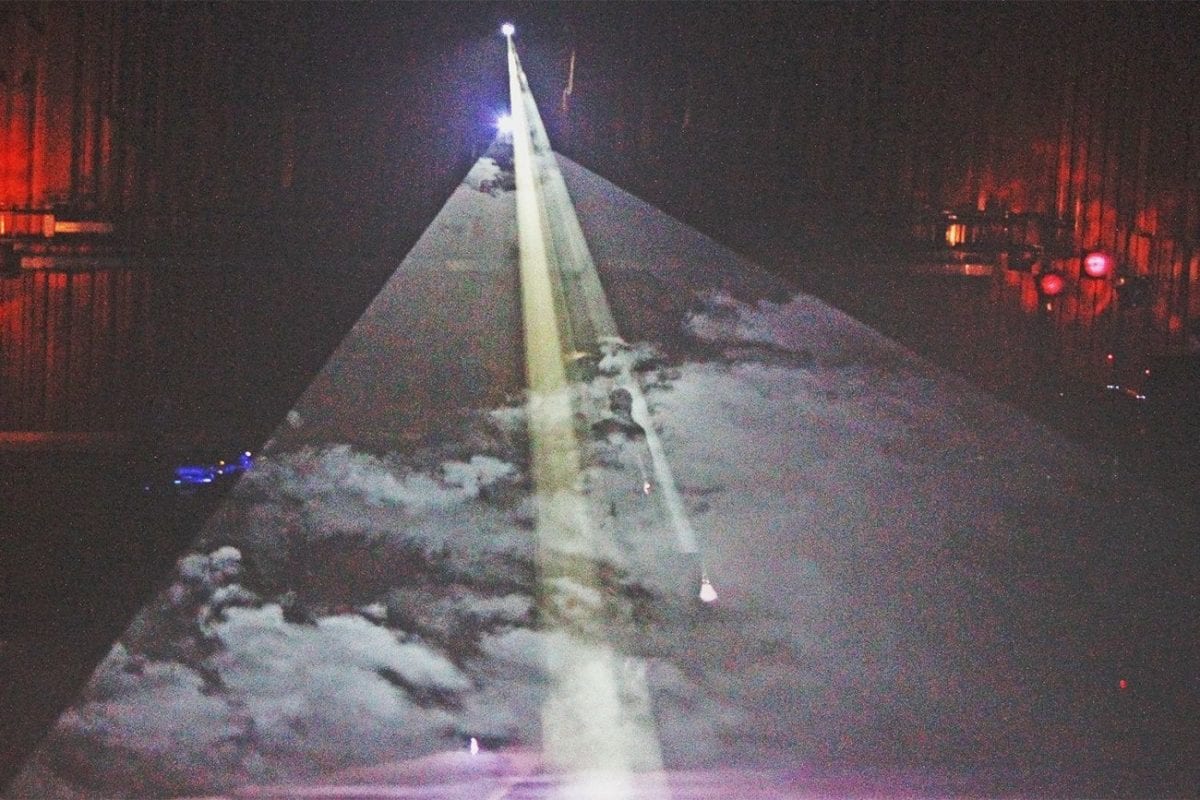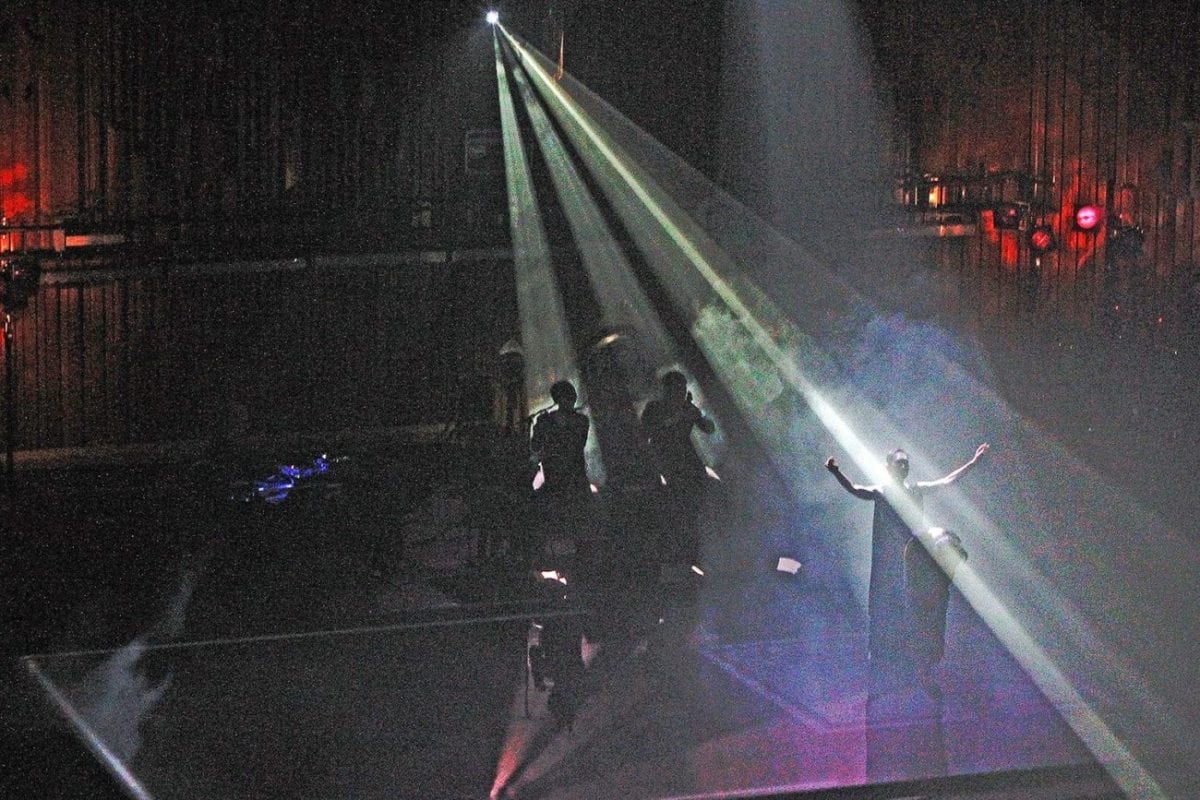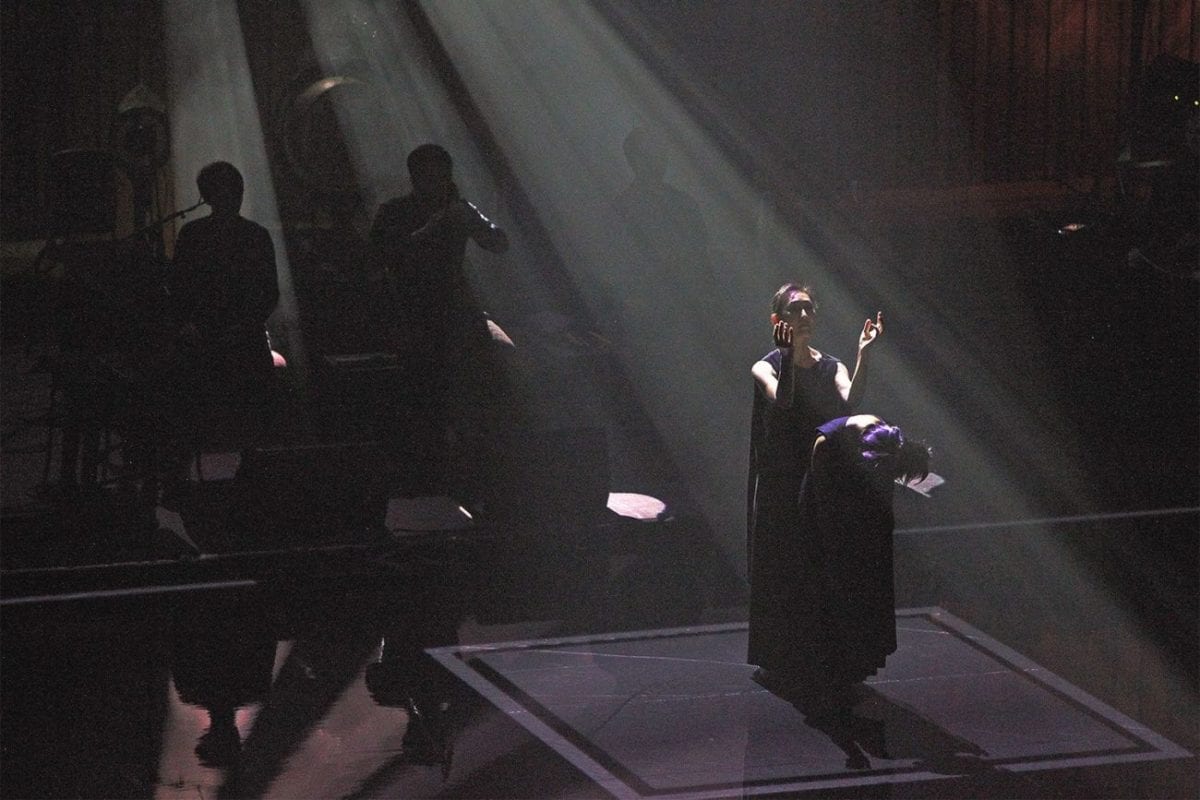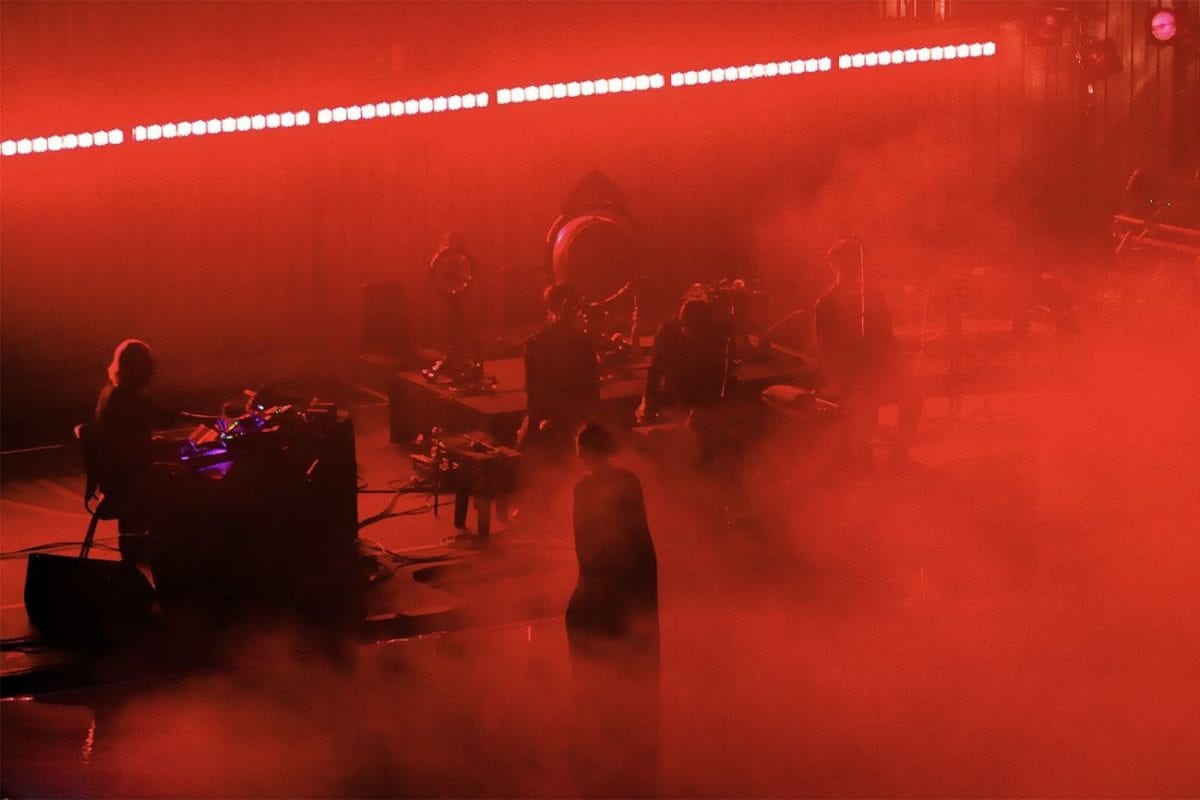
There comes a moment midway through Tim Hecker’s set at the Barbican that the strobe sparsely lighting the stage is thrust out into the audience with full force. A blanket of light slowly descends, and as the source reaches your level it seems to dare you not to look away. The smoke that has been filling the room since before the performance began is transformed into a shifting watery blanket, combining with the bass-y climax of the sound to seemingly change the contours of the space.
It’s a moment of provocation that captures a tension present in both Hecker and support act Kara-Lis Coverdale’s music. Instrumentation and materials that carry echoes of something deeply spiritual, played off against a very modern sense of physicality.
For the evening’s performance, the usual warmth and softness of the Barbican’s main hall is morphed through sheer darkness into a cavernous space. It means that the slightest distraction, whether the guy sitting next to me unwrapping a sweet or the ushers using a torch to bring late arrivals to their seats, becomes exaggerated, a seismic onrush of the mundane.
Hecker is presenting music from his latest album ‘Konoyo‘. As with that release, his Barbican performance is a collaboration with five Gagaku performers from Tokyo, three musicians playing traditional Japanese instruments, along with two dancers whose presence on the stage is often obscured in the smoky murk. Support slot and headline are put together as one event. Coverdale’s performance ends on a whispering drone which segues into the opening of Hecker’s performance, and she remains on stage as a member of the headliner’s ensemble.
Coverdale’s opening set is illuminated by a single light at the corner of the stage, the effect more Father Merrin’s arrival than a limelight. The opening moments of her performance mirror textures from last year’s Grafts release, but eschew that record’s loops into something for more contorted and haunted.

As the set moves forward, the palette of sonics gets more varied, interweaving organ melodies, flute like textures, and stabs of distorted keys. The choral-like layers and cathedral paced melodies often point towards some spiritual affected minimalism. However, Coverdale sidesteps a drawn out build up and release structure and instead moves through ideas at pace, giving the set a disorientating momentum. Ethereal moments are quickly achieved and then discarded, like swiping your thumb in a bid for salvation.
Hecker is more willing to be taken by the current rather than attempt to dam the flow of the river, his set, like his albums, working in naturally building crescendos. With the Konoyo Ensemble, the contrast between the ethereal and the brutal in his music is rendered in even higher definition.
Gagaku is an ancient form of imperial Japanese court music whose name roughly translates to “elegant music”. Still performed today, it is tightly connected to ideas of ritual and deep concentration, built around ebbing, evolving harmonic structures.
At the Barbican, the complex tapestries of ryuteki, shō and hichiriki from the Gagaku musicians are given more prominence than on Konoyo. At times the three players are left virtually alone with little accompaniment or affect from Hecker, bringing home the intimacy of the sounds and stressing that this music is connected to a tradition refined over centuries. At other times, the Gagaku melodies seem to be blown apart by the ragged physicality of Hecker’s electronic orchestrations. A sudden invasion of accelerated 21st century reality into the spiritual realm.
The best moments of the set come when instead of pushing and pulling at each other, the traditional Japanese instrumentation and the dense slabs of Hecker’s music start to sync, the textures meshing into a cathartic whole. At their most ferocious, the sheer volume and swell of low-end frequency in these moments seems to tear at the cabinets of the Barbican’s sound system. The audio feels restricted by the vessel there to communicate it, and spectral phenomena appear in the acoustic/digital overload.
Both Coverdale and Hecker bolt timbres and resonances developed through centuries onto the freight train of the present, creating a smothering ecstasy for a time when everything is available all at once.
Photography by Marilyn Kingwill

